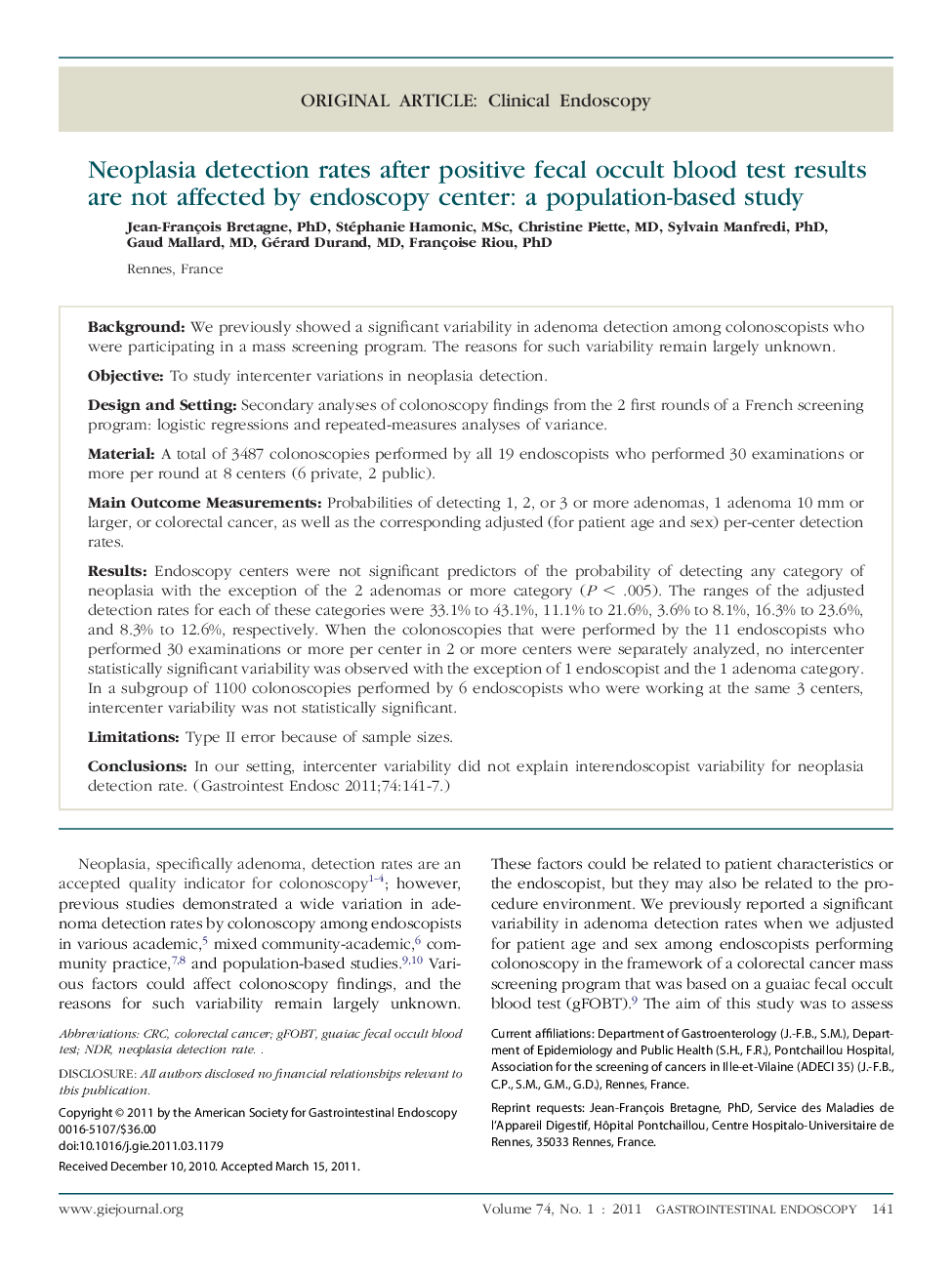| Article ID | Journal | Published Year | Pages | File Type |
|---|---|---|---|---|
| 6098353 | Gastrointestinal Endoscopy | 2011 | 7 Pages |
BackgroundWe previously showed a significant variability in adenoma detection among colonoscopists who were participating in a mass screening program. The reasons for such variability remain largely unknown.ObjectiveTo study intercenter variations in neoplasia detection.Design and SettingSecondary analyses of colonoscopy findings from the 2 first rounds of a French screening program: logistic regressions and repeated-measures analyses of variance.MaterialA total of 3487 colonoscopies performed by all 19 endoscopists who performed 30 examinations or more per round at 8 centers (6 private, 2 public).Main Outcome MeasurementsProbabilities of detecting 1, 2, or 3 or more adenomas, 1 adenoma 10 mm or larger, or colorectal cancer, as well as the corresponding adjusted (for patient age and sex) per-center detection rates.ResultsEndoscopy centers were not significant predictors of the probability of detecting any category of neoplasia with the exception of the 2 adenomas or more category (P < .005). The ranges of the adjusted detection rates for each of these categories were 33.1% to 43.1%, 11.1% to 21.6%, 3.6% to 8.1%, 16.3% to 23.6%, and 8.3% to 12.6%, respectively. When the colonoscopies that were performed by the 11 endoscopists who performed 30 examinations or more per center in 2 or more centers were separately analyzed, no intercenter statistically significant variability was observed with the exception of 1 endoscopist and the 1 adenoma category. In a subgroup of 1100 colonoscopies performed by 6 endoscopists who were working at the same 3 centers, intercenter variability was not statistically significant.LimitationsType II error because of sample sizes.ConclusionsIn our setting, intercenter variability did not explain interendoscopist variability for neoplasia detection rate.
